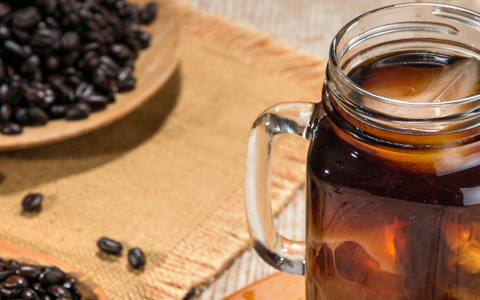Why You Should Try Cold Brew – The Art of Cold-Infused Coffee
Not all coffees are created equal, and neither are coffee drinkers. A hardcore barista might “accidentally” knock over your sugar jar, while a ristretto fan may roll their eyes at a frothy frappe. Fortunately, today’s article is for everyone—whether you’re a purist or a lover of sweet, indulgent flavors. Let’s explore why Cold Brew is taking over cafés and kitchens around the world.
Cold Brew Is Not Iced Coffee
Cold brew is not the same as iced coffee or frappe. Iced coffee is typically hot coffee that’s been cooled down with ice. Cold brew, however, never comes in contact with hot water, which makes a huge difference in its chemical profile and taste.
Cold Coffee, Warm Welcome
Cold brew coffee has grown in popularity globally over the last few years. It’s converting die-hard fans of hot or iced coffee thanks to its smoother flavor, reduced bitterness, and lower acidity. It’s also gentler on the stomach and can stay fresh for up to two weeks.
These aren’t just marketing gimmicks. Coffee beans contain over 1,000 different compounds—including malic acid (also found in green apples) and Furaneol (a sweet-smelling compound found in strawberries and used in perfumes). These are responsible for coffee’s irresistible aroma and flavor.
Temperature vs. Time
Brewing coffee is essentially extracting those compounds into water. Two main factors determine the result: temperature and time.
Hot Brew
Hot coffee relies on temperature. The high heat quickly extracts flavor compounds within minutes—but it also causes rapid oxidation and breakdown of acids and oils, which leads to a more bitter, acidic cup.
Cold Brew
Cold brew, on the other hand, uses time. With no heat to accelerate the process, extraction takes much longer—often 12 to 24 hours—but results in a smoother, slightly sweeter taste. Many sweet compounds are water-soluble even in cold water, unlike most acids and oils. That’s why cold brew can be strong in caffeine without tasting harsh.
Making Your First Cold Brew
We’re not here to convert you—but every coffee lover owes it to themselves to try a proper cold brew. If you’re up for it, here are some tips for making your first batch at home:
- Use coarse ground coffee. Fine grounds will over-extract and taste bitter. They’ll also require double filtering to remove unwanted particles.
- Use the right coffee-to-water ratio. Common ratios include 1:3, 1:7, or even 1:1 depending on your preference. Cold brew typically needs more coffee than hot methods.
- Make it yourself instead of buying it. Unless you trust the barista and the café’s process, homemade cold brew will give you better quality and more control.
How to Brew
Let the coffee steep for at least 12 hours. A French Press is a great and easy way to make cold brew at home. There are also specialized cold brew makers, but you don’t need them to get started.
Let the mixture sit in a cool place or refrigerate for up to 24 hours. For a refreshing version, add ice cubes to your glass. Better yet, use frozen coffee cubes (made from leftover cold brew) for an extra kick without diluting the flavor.


